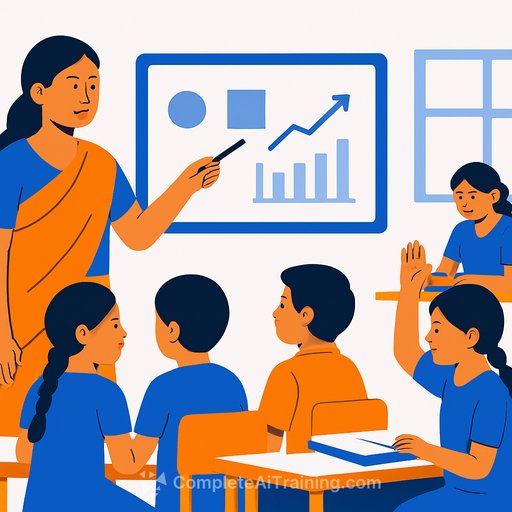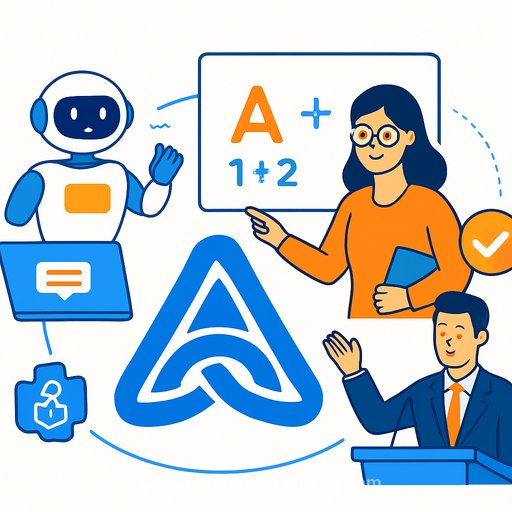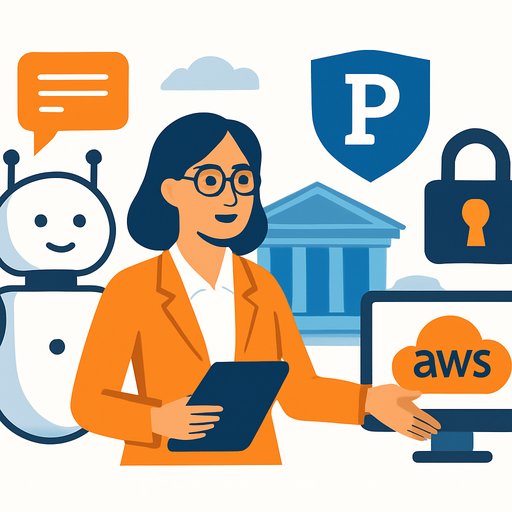Breaking Records While Bridging Rural Education with AI
Rural classrooms don't wait for perfect conditions. They work with what's in front of them: one teacher, many grades, multiple languages, and limited connectivity. That's the environment that shaped SRIMATHY and later inspired SAHAYAK.
Led by Imran Razack with engineers Naveen Sampath, Rajesh Badveti, and Vishnu K, the team first built SRIMATHY to help teachers practice spoken English with interactive lessons and feedback made for real classroom challenges. The momentum carried into Google Cloud's Agentic AI Day, where the team built SAHAYAK-an assistant for multi-grade, multilingual classrooms that works even when the internet doesn't.
From SRIMATHY to SAHAYAK: What changed
SRIMATHY focused on teacher fluency and confidence. SAHAYAK expands the scope to the whole classroom. It supports teachers and students with offline capability, adaptive practice, and local language support.
The concept is simple: meet teachers where they are, reduce prep time, and help students practice at the right level-without adding tech burden.
What SAHAYAK does in a rural, multi-grade class
- Offline-first: Lessons, prompts, and assessments run without constant connectivity, syncing when a signal is available.
- Multilingual: Content and guidance in English plus regional languages so teachers can switch frictionlessly.
- Adaptive practice: Students get leveled tasks; teachers get quick snapshots of who needs help and why.
- Teacher companion: Generates lesson scaffolds, quick checks, and simple explanations based on grade mix and topic.
- Voice-friendly: Works with speech input for pronunciation and faster feedback in low-literacy contexts.
How to pilot this in 30 days
- Week 1 - Scope: Pick two subjects (e.g., English and Math) and two grades. Define 5-7 core skills to assess.
- Week 2 - Setup: Load offline content packs and language models on shared Android devices. Train two lead teachers for 90 minutes.
- Week 3 - Run: Use SAHAYAK for 20 minutes per day: 10 minutes teacher assist, 10 minutes student practice.
- Week 4 - Review: Compare entry vs. exit checks. Collect teacher notes on prep time saved and classroom flow.
What to measure (keep it simple)
- Teacher: Prep time per lesson, clarity of explanations, confidence speaking English in class.
- Student: Reading fluency (words correct per minute), basic numeracy accuracy, time on task.
- Access: % of usage offline, device sharing efficiency (students per device per session).
Infrastructure that works in low-connectivity settings
- Devices: Entry-level Android phones or tablets with 2-3 GB RAM. Shared model is fine.
- Battery first: Power banks and a charging routine beat fancy features. Keep sessions short and predictable.
- Offline packs: Preload lessons, voice models, and language packs on SD cards.
- Privacy: Keep student data on-device whenever possible; sync anonymized summaries only.
What made this possible
The team behind SRIMATHY carried the same mindset into SAHAYAK: build for constraints, keep teachers in the loop, and iterate fast. During Agentic AI Day, contributors from different time zones rallied around one idea-make AI useful in the classroom a teacher actually has, not the one in a brochure.
That energy spread. CSR and education teams saw a practical path for inclusive growth. Colleagues reached out with their own use cases and offers to help.
How you can contribute
- Educators: Share real lesson plans and pain points. Short voice notes or screenshots are enough to improve prompts and content.
- Program leaders: Fund device libraries, SD cards, and teacher training blocks rather than one-off demos.
- Volunteers: Translate prompts, record local-language audio, and test with small student groups.
- Community partners: Help with parent orientation so home support matches classroom practice.
If you're exploring socially responsible AI projects, the global AI for Good initiative highlights useful frameworks and examples. For practical upskilling, browse role-based AI training options here: Complete AI Training - Courses by Job.
The bigger picture
Every time a teacher saves 15 minutes of prep, a student gets another shot at practice. Every time a student gets the right question at the right time, confidence grows. That's the point.
SAHAYAK isn't the finish line. It's a step in a longer effort to make useful technology standard in every classroom-one school, one teacher, and one learner at a time.
Your membership also unlocks:





